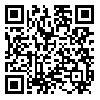Volume 5, Issue 1 (Occupational Medicine Quarterly Journal 2013)
tkj 2013, 5(1): 1-7 |
Back to browse issues page
Abstract: (8129 Views)
Background: Fatigue is an important inhibiting factor in human performance, so with rising aerobic power could be overcome individual fatigue. Based on the importance of maximum oxygen consumption at fatigue threshold, the purpose of this study was to evaluate changes in temperature of the maximum rate of oxygen consumption and time to exhaustion in workers of spinning factory.
Methods: In this quasi-experimental study, maximum rate of oxygen consumption in 30 participants in three series was measured: A) Before running Strand and Kankany step test at the temperature of 25 ° c, B) After running Astrand and Kankany step test the temperature of 25 ° c and C) 48 hours later, at the temperature of 40 ° c. For data analysis SPSS (version18) was used.
Results: Results indicated that the mean maximum oxygen consumption in Astrand step test in temperature of 25 ° c and 40 °c was 55.1±6.2 and 50.8±5.6 respectively, and for Kankany test was 31.2±1.8(25 ° c) and 30.4±0.81 (40 ° c). Therefore there were significant difference between heart rate average, maximum rate of oxygen consumption and amount of work done in two different temperatures in Strand step test (p<0/05), Also in Kankany test, significant difference observed between average of heart rate and the amount of work done at the two temperatures (p <0/05), but there was no significant difference between the maximum oxygen consumption at two temperatures.
Conclusions: The overall results of this study showed at temperature of 40 ° c, the maximum rate of oxygen consumption was less than 25 ° c. In other word, in higher temperatures, the maximum rate of oxygen consumption was decreased.
Type of Study: Research |
Subject:
General
Received: 2013/06/20 | Accepted: 2013/12/14 | Published: 2013/12/14
Received: 2013/06/20 | Accepted: 2013/12/14 | Published: 2013/12/14
| Rights and permissions | |
 |
This work is licensed under a Creative Commons Attribution-NonCommercial 4.0 International License. |


